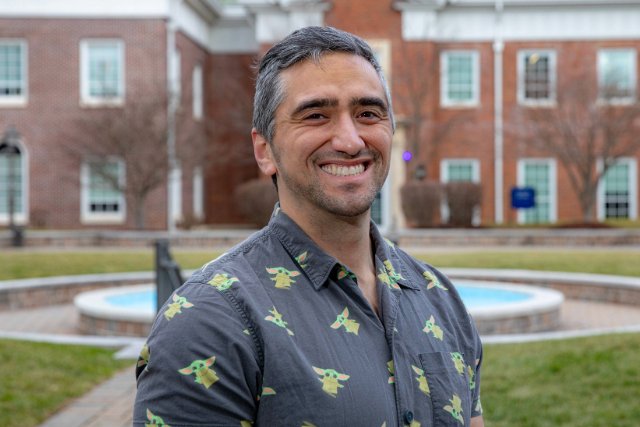[ad_1]
As a kid, Nick Battista wasn’t much of a swimmer.
Growing up outside of Buffalo, New York, he loved going to the aquarium and admiring his grandmother’s fish tanks, but on trips to the beach, a fear of sharks kept him from venturing into the water.
That changed during the last year of his PhD in mathematics where he studied the fluid dynamics at play in the development of the human heart. His adviser encouraged him to join her in taking up scuba diving so they could draw inspiration from nature and study how fluid dynamics affected other animals.
Battista is now an associate professor of mathematics at TCNJ, and he visits the Florida Keys twice a year to dive with his research collaborators, including his former advisor. There’s now even more diving in their future, as Battista has secured a collaborative research grant from the National Science Foundation to develop new computational methods to understand predator-prey interactions underwater.
The three-year, $124,000 grant will fund field studies and quantitative analysis of how cnidarians (a branch of the animal kingdom that includes jellyfish and coral) are affected by fluid dynamics in their attempts to capture the plankton they eat — and how those interactions look from the prey’s perspective.
“We’re still learning things from animals all the time”, Battista says. “Imagine a jellyfish expanding and contracting to swim. It seems like a relatively simple process, but there’s some really interesting physics going on.”
Using a combination of calculus, geometry, differential equations, and machine learning — and the biological validation offered by observing sea creatures in their natural habitats — Battista and his colleagues will seek to understand how animals maneuver through water to achieve their goals, whether that means capture or escape.
He plans to work with undergraduates from TCNJ’s School of Science and the School of Engineering on some of the mathematical modeling that undergirds this multidisciplinary research. And although the grant emphasizes the study of aquatic life, it will also support the development of new mathematical approaches that could expand into other arenas, just as Battista’s study of cardiovascular dynamics eventually led him to the sea.
“A beautiful thing about math,” he says, “is that the same methods we’re creating to study how animals swim and interact can be used for completely different applications in engineering or medicine, too.”
— Ben Seal, with reporting by Emily W. Dodd ’03
[ad_2]
Source link












